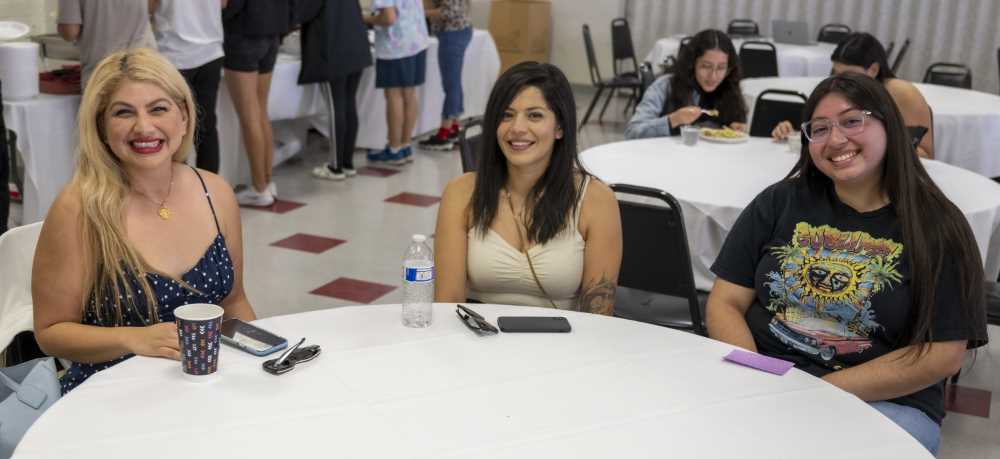“Women of Color in STEM” Was a Huge Hit
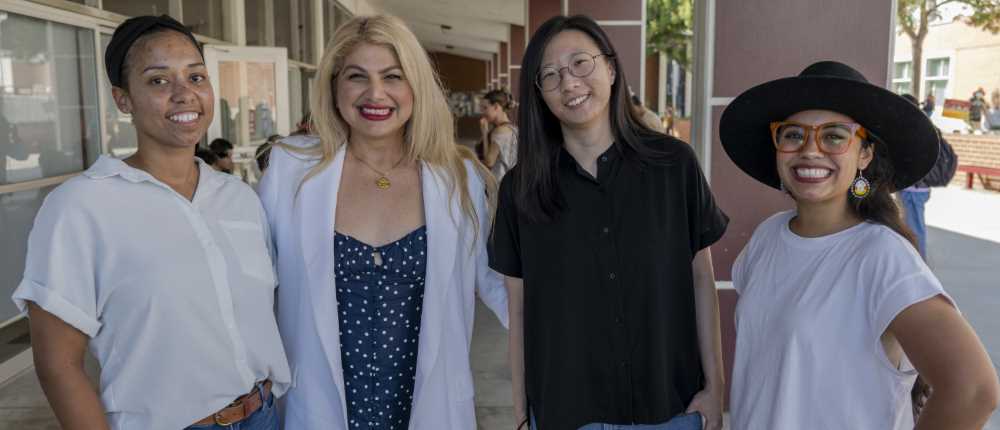
October 26, 2022 - 12:29 AM
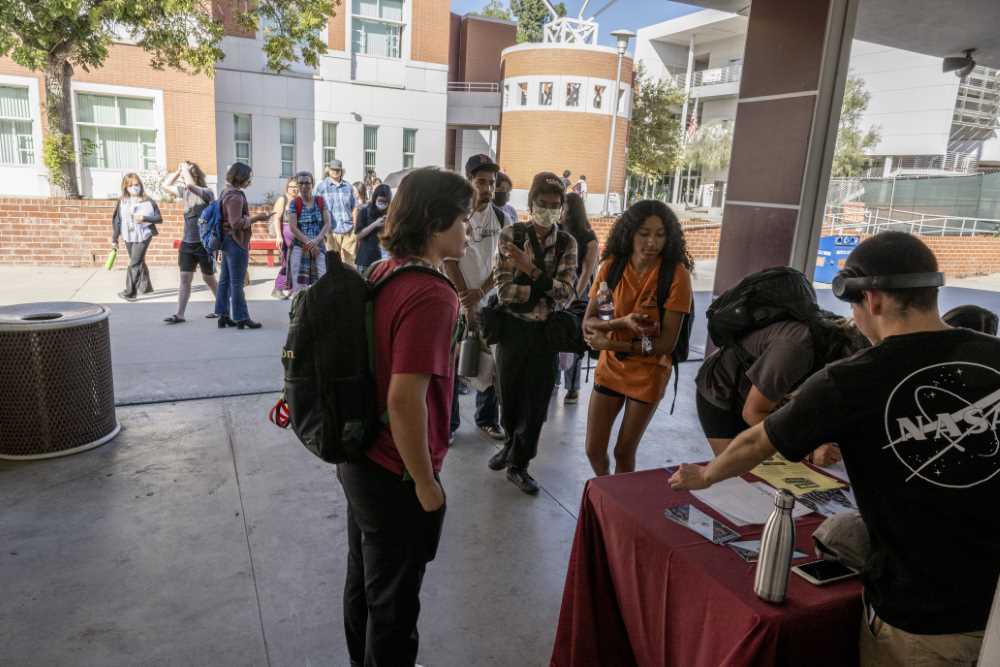 It was standing room only in Building 9C for the Women of Color in STEM event that gathered four prominent professionals to describe the challenges, struggles
and rewards of pursuing a career in a STEM field.
It was standing room only in Building 9C for the Women of Color in STEM event that gathered four prominent professionals to describe the challenges, struggles
and rewards of pursuing a career in a STEM field.
“We anticipated a crowd of 75 to 100, but we had 150 students on top of the 20 to 30 staff and faculty,” said STEM Faculty Coordinator Anthony Xavier Lopez.
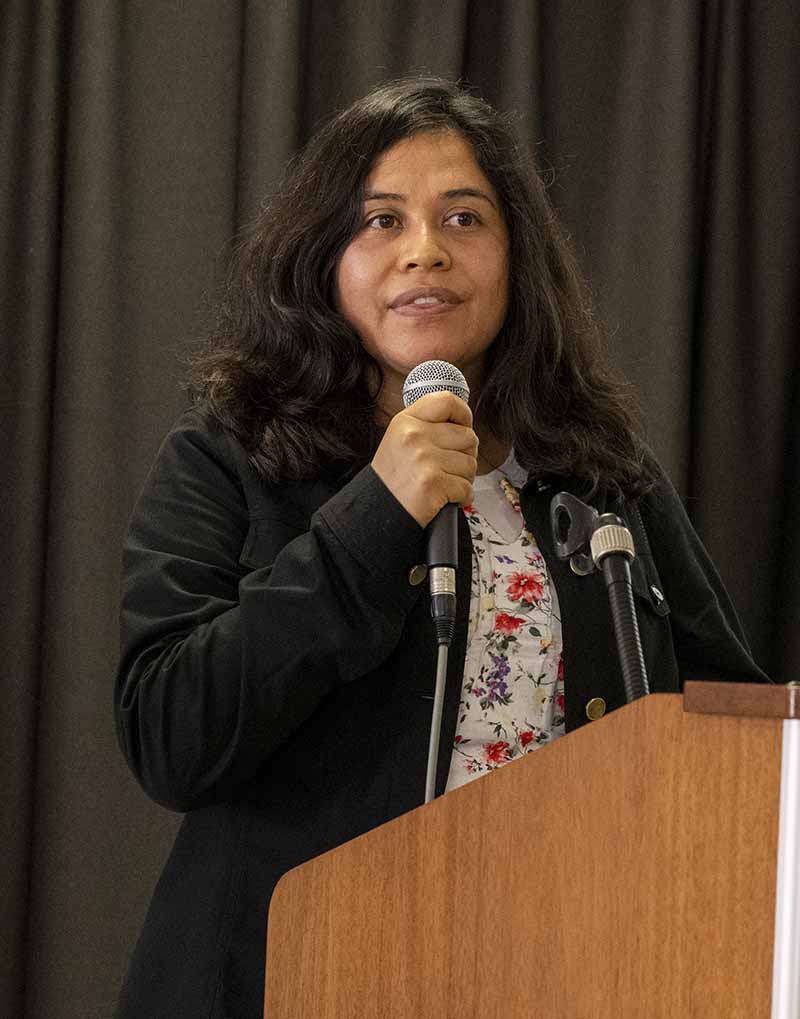 The event was a joint production of the Equity Center and the STEM Center, with Biology Professor Maura Palacios Mejia as the host.
The event was a joint production of the Equity Center and the STEM Center, with Biology Professor Maura Palacios Mejia as the host.
Four women of color Mt. SAC STEM students got a chance to introduce the four speakers, who ranged from a scientist at the company that created the Impossible Burger, to a NASA engineer.
“We cultivated a partnership with the STEM Center over the past couple of months to bring this event to campus,” explained Equity Center Program Specialist Betzabel Martinez.
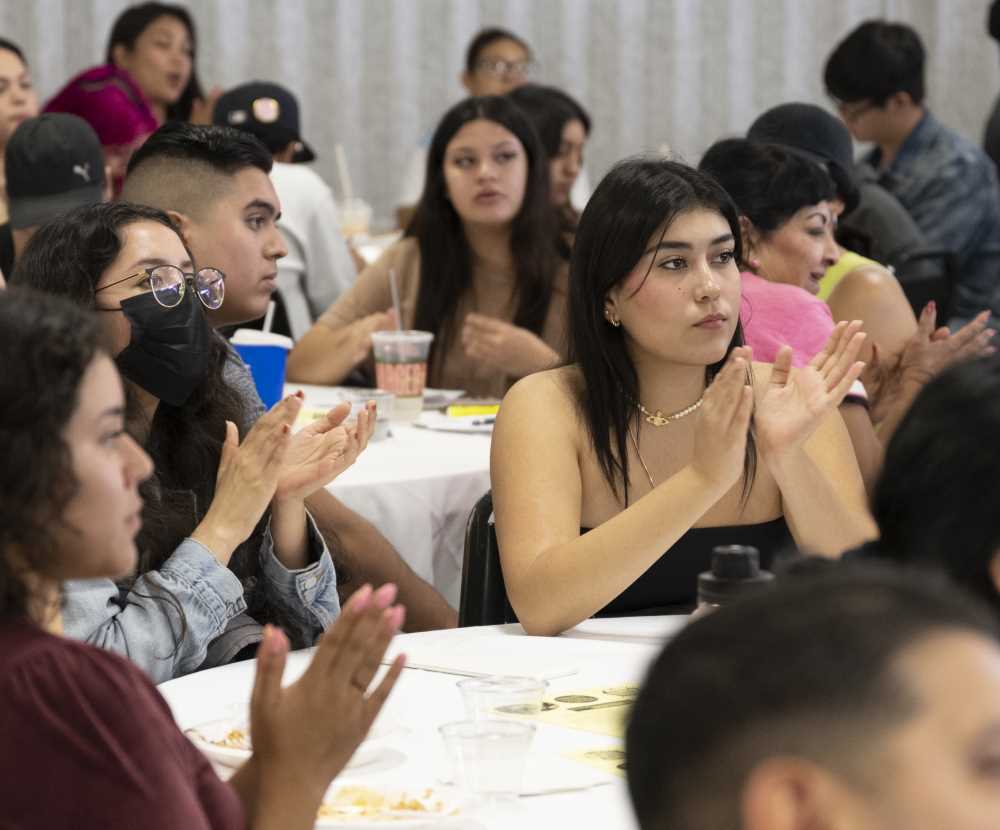 STEM (Science, Technology, Engineering, Math) fields have traditionally been male-dominated,
and even more so among persons of color. According to the American Association of University Women (AAUW), the gender bias is due to “gender tracking” from preschool through high school,
whereby stereotypes teach girls they are expected to be “good at” certain subjects
(mostly non-STEM), even though girls are on par with boys in math and science throughout
their education. The Pew Research Center found that people of color experience higher levels of discrimination, incur various
microaggressions, and a lack of overall mentorship and support in STEM.
STEM (Science, Technology, Engineering, Math) fields have traditionally been male-dominated,
and even more so among persons of color. According to the American Association of University Women (AAUW), the gender bias is due to “gender tracking” from preschool through high school,
whereby stereotypes teach girls they are expected to be “good at” certain subjects
(mostly non-STEM), even though girls are on par with boys in math and science throughout
their education. The Pew Research Center found that people of color experience higher levels of discrimination, incur various
microaggressions, and a lack of overall mentorship and support in STEM.
The speakers included:
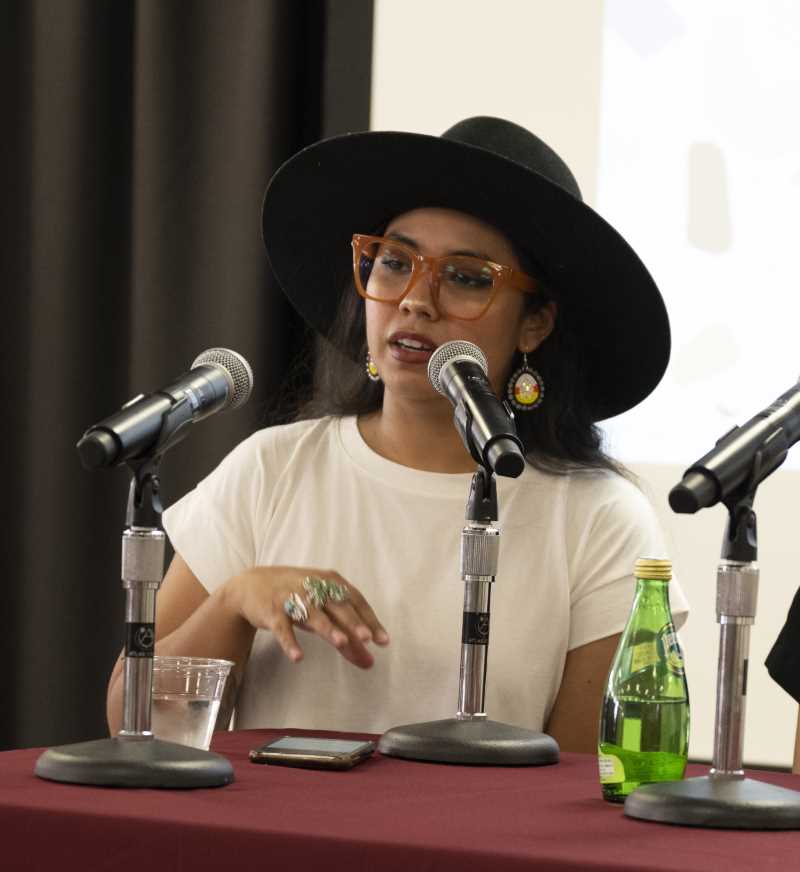 Lauren Denson - an engineer at NASA’s Jet Propulsion Laboratory (JPL) near Pasadena. She is a Tribal
Council Member with the Chihene Nde Nation of New Mexico and volunteers with the American
Indian Science and Engineering Society.
Lauren Denson - an engineer at NASA’s Jet Propulsion Laboratory (JPL) near Pasadena. She is a Tribal
Council Member with the Chihene Nde Nation of New Mexico and volunteers with the American
Indian Science and Engineering Society.
“I (worked at Disneyland) and met an Imagineer,” explained Denson, referring to the job title Disney uses for the employees who build all Disney theme parks, resorts, and attractions. “They told me to go into Computer Science, and I thought ‘OK, I will do that’… For me when I was in school, I didn’t know what I would actually be doing with Computer Science/Computer Engineering. It wasn’t what I expected.”
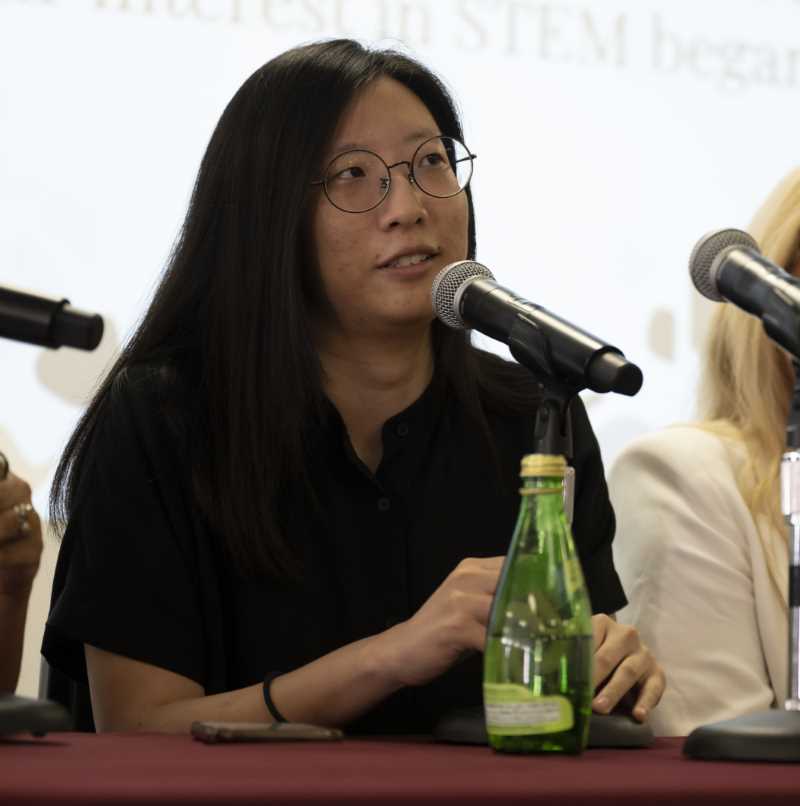 Hye Min Cho is a media artist famous for using machine learning technologies to create her art,
which includes video installations and infinitely running time-based generative paintings.
Hye Min Cho is a media artist famous for using machine learning technologies to create her art,
which includes video installations and infinitely running time-based generative paintings.
“Throughout middle school and high school, I was interested in video games and special effects in movies," explained Cho. “That’s how I first got started learning about software and programming and learned I wanted to work at the intersection of art and technology… getting into a career path in STEM was something I had to figure out on my own.”
 Dr. Terry Reyes is a Regulatory Affairs Scientist at Impossible Foods, the company responsible for
the immensely popular Impossible Burger. She is a former undocumented immigrant whose
educational path was severely restricted by Prop 187, a state ballot measure in 1994
that prohibited undocumented immigrants from using public education and other state
services.
Dr. Terry Reyes is a Regulatory Affairs Scientist at Impossible Foods, the company responsible for
the immensely popular Impossible Burger. She is a former undocumented immigrant whose
educational path was severely restricted by Prop 187, a state ballot measure in 1994
that prohibited undocumented immigrants from using public education and other state
services.
“I came to the United States when I was 15 years old,” said Dr. Reyes. “It was a very difficult path to get to my Ph.D. at Stanford. I spent ten years of my life at a community college before I was able to transfer to San Francisco State University…The most important thing is showing you can do it, showing representation. It doesn’t help that society looks at us as a different category. Hopefully today, you can see yourself in me,” she told the crowd.
 Dr. Jinae Roa is an Assistant Professor of Biology at Cal State LA. Her educational research was
in the muscle physiology of marine fish.
Dr. Jinae Roa is an Assistant Professor of Biology at Cal State LA. Her educational research was
in the muscle physiology of marine fish.
“My mom was a lifelong nurse,” said Roa. “My sister became a physician. I thought I was going to be Pre-Med. But I am more of an introvert and I really loved the solitude of the ocean and marine life. But it wasn’t until my final year as an undergrad that a professor reached out to me and introduce to me the idea of using a Biology degree for something that wasn’t medicine.”
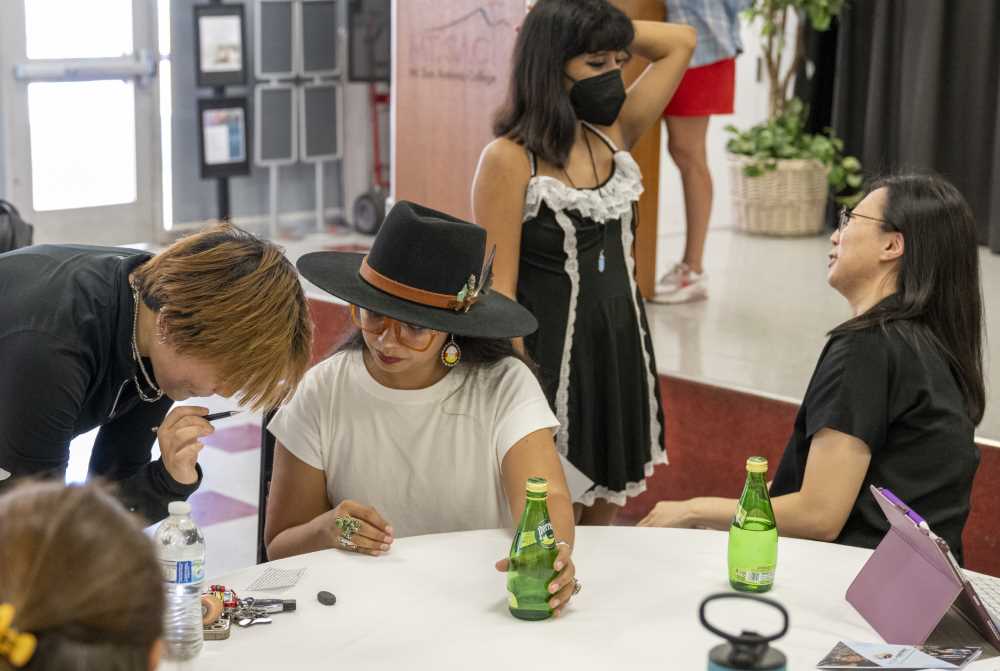 The stories of these women of color were meant to serve as inspiration for students
who are already pursuing STEM education and those who have been steered away from
STEM fields by societal stereotypes and a lack of resources to build a science identity
for themselves.
The stories of these women of color were meant to serve as inspiration for students
who are already pursuing STEM education and those who have been steered away from
STEM fields by societal stereotypes and a lack of resources to build a science identity
for themselves.
Professor Lopez said that over and above the considerable crowd the event attracted, in the days following, “numerous students shared with us how powerful the event was to their science identity. Many shared how they left feeling empowered and motivated to do well in their science courses. That alone makes the event a tremendous success.”

